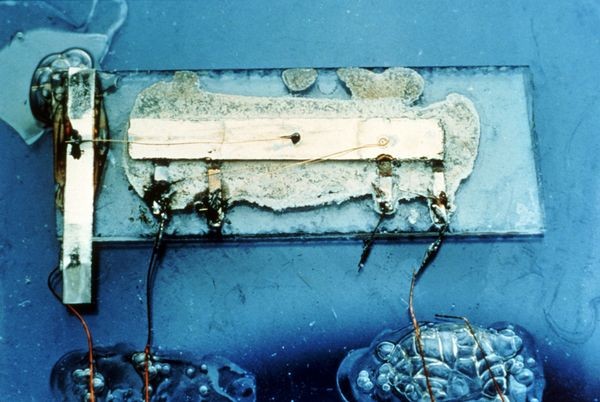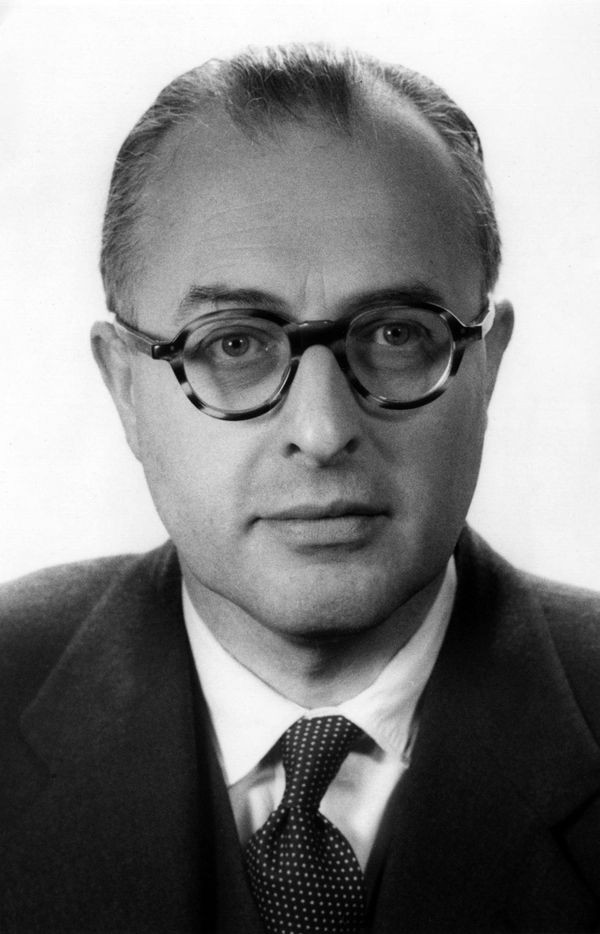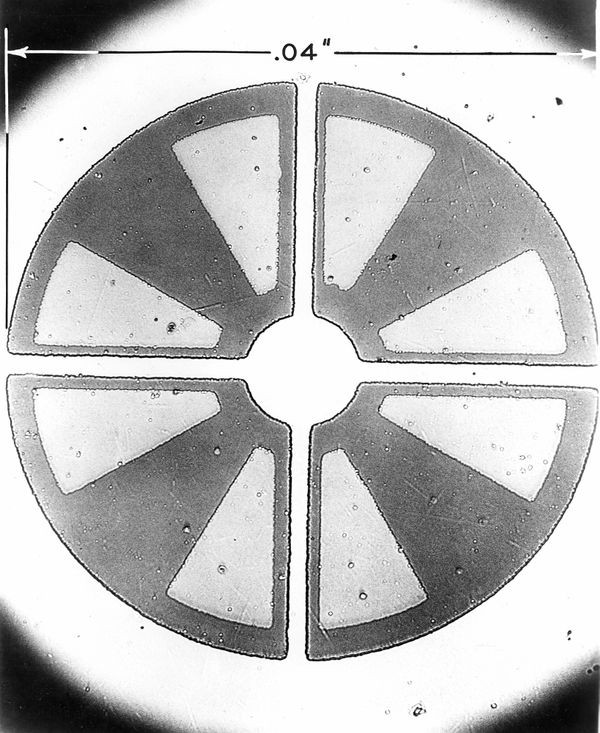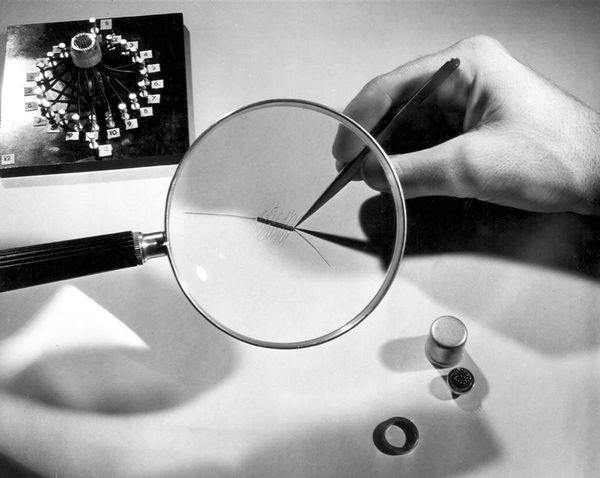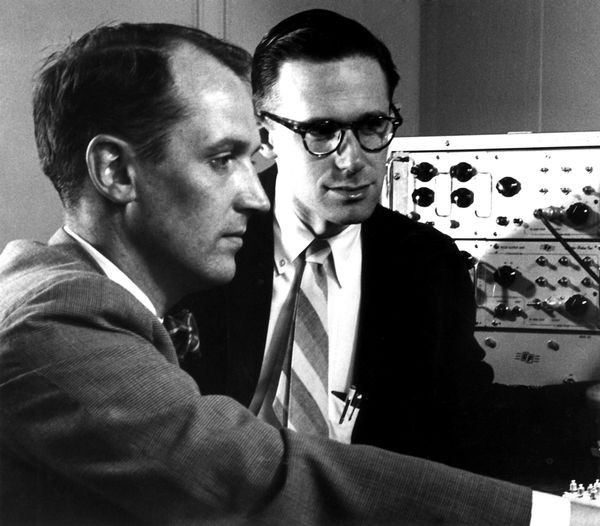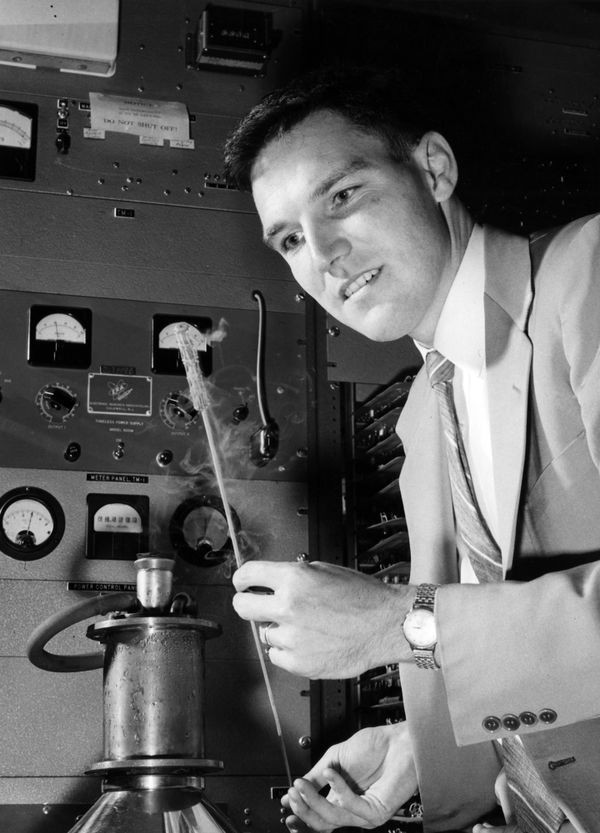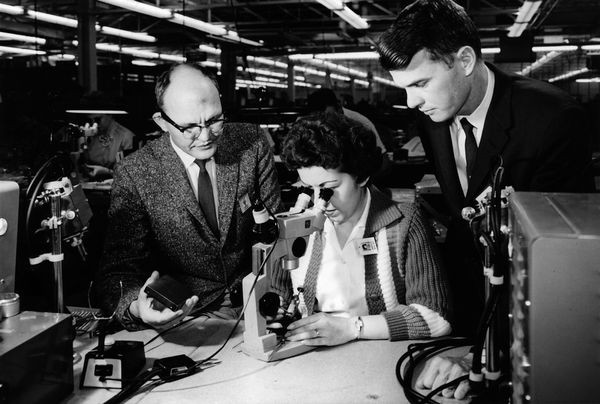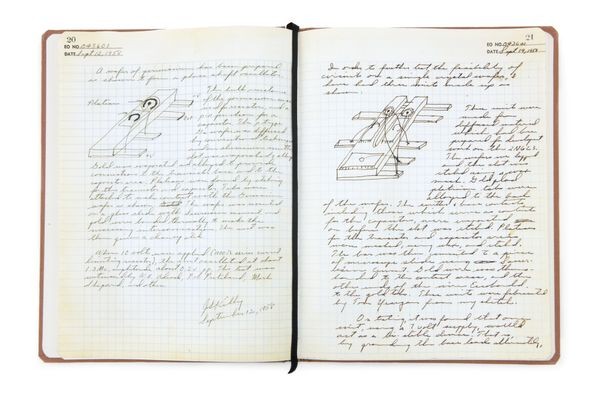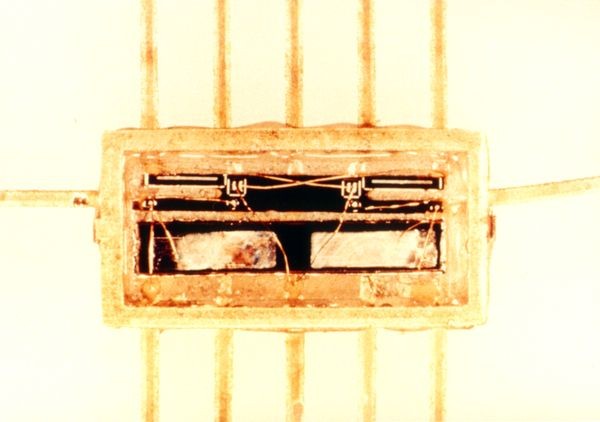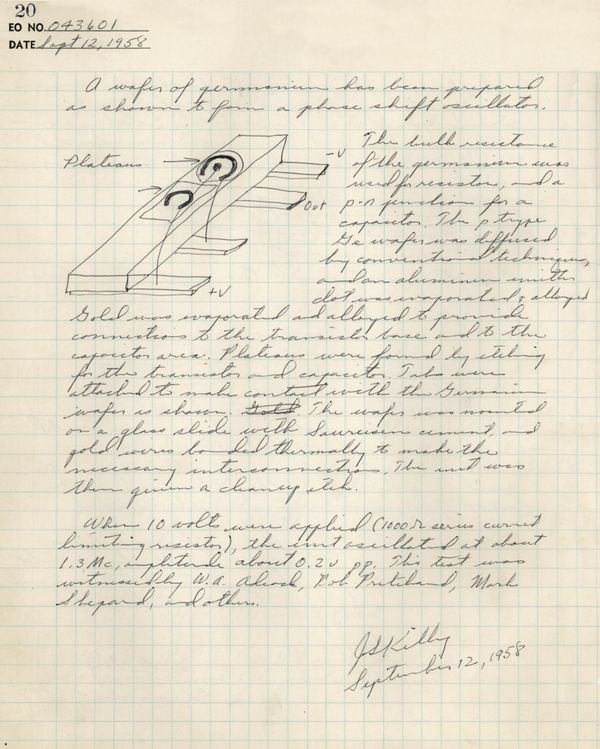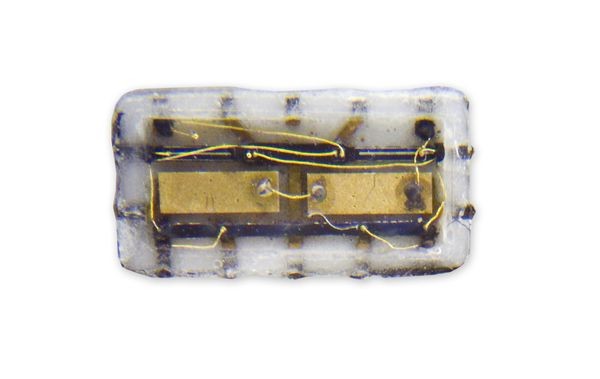The Integrated Circuit
Jack Kilby's first solid circuit
Kilby's first working circuit, tested on September 12, 1958, was etched on germanium. He often remarked that if he'd known he'd be showing it for the rest of his life, he would have "prettied it up a little."
The Integrated Circuit
Throughout history, military needs (and military budgets) have spurred technological innovation. During the Cold War, demand for increasingly complex yet smaller, lighter, and more reliable electronic equipment fed the quest for better ways to package transistors.
Modules and “hybrid” microcircuits squeezed components into miniature enclosures. But engineers dreamed of fabricating multiple devices and interconnections on a single piece of semiconductor material.
Geoffrey Dummer (1909-2002)
Dummer was an authority on airborne electronics reliability. His 1952 paper stimulated work on the integrated circuit at labs in the U.K. and U.S.
View Artifact DetailWith the advent of the transistor and the work in semiconductors generally it seems now possible to envisage electronic equipment in a solid block with no connecting wires.
A Solid Block Without Wires
Beginning in the mid-1950s, several research groups and scientists, including G.W.A. Dummer himself in the U.K., embarked on projects aimed at realizing Dummer’s vision of a complete electronic circuit on a single piece of semiconductor material.
Different teams followed different paths.
Engineers at Bell Labs and IBM independently built complex multi-junction devices that operated as digital counters. The Air Force funded RCA to make integrated logic gates and shift registers. William Shockley became obsessed with developing a four-layer diode switch, which led to his company’s downfall. Westinghouse even pursued an idea proposed by MIT professor Arthur von Hipple that involved arranging materials at the molecular level to perform electronic functions.
Until 1958, however, nobody had demonstrated a general-purpose solution.
Stepping transistor counter
I.M. Ross, H.H. Loar and L.A. D'Asaro of Bell Labs described the stepping transistor, used to create a single-chip, four-stage counter for telephone system applications, in 1956.
View Artifact DetailIntegrated electronic shift register
RCA Laboratories announced this experimental single chip 10-bit shift register transistor designed by Torkel Walmark in March 1958.
View Artifact DetailIan Ross and Arthur D’Asaro
Ross (later president of Bell Labs) at left and D’Asaro at work in the lab.
View Artifact DetailDudley A. Buck (1927-1959)
At MIT in the early 1950s, Buck created the cryotron superconducting switches as a replacement for tubes in miniature high-speed computer logic circuits.
View Artifact DetailKilby’s Flying Wires
Texas Instruments hired Jack Kilby to design transistor circuit modules. Kilby had other ideas.
Believing the modules a dead end, he spent TI’s company-wide summer vacation in 1958 looking for an alternative. Kilby etched separate transistor, capacitor, and resistor elements on a single germanium slice, then connected them with fine gold “flying” wires into oscillator and amplifier “solid circuits.”
TI introduced Kilby’s Type 502 Binary Flip-Flop in 1959. Although Kilby’s hand-crafted solid-circuit approach was impractical for mass production, his work pointed the way to a practical monolithic solution.
Jack Kilby (1923-2005)
Jack Kilby (left), Jackie Walsh (center) and Harvey Cragon (right) checking a circuit for the Texas Instruments’ prototype “molecular” computer that used 587 ICs to replace 8500 transistors.
View Artifact DetailJack Kilby’s Notebook (replica)
Jack Kilby recorded the successful demonstration of his first solid circuit on page 20 of his engineering notebook. Signed “JS Kilby”, the page is dated September 12, 1958.
View Artifact DetailType 502 “Solid Circuit,” Texas Instruments
The separate components on this TI Type 502 bistable multivibrator circuit were electrically isolated from each other by air gaps etched in the silicon, and interconnected by fine gold “flying wires.”
View Artifact DetailSolid circuit sketch, Texas Instruments
A sketch from Jack Kilby’s engineering notebook shows transistor and capacitor elements etched on the surface of the germanium slice.
View Artifact DetailFlying wire type integrated circuit, TI, circa 1959
Fine gold “flying wires” interconnected the separate functional components on this Texas Instruments “solid circuit” chip.
View Artifact DetailRelated Content
Learn about early steps in the evolution of the integrated circuit
Precursors to the modern integrated circuit
G. W. A Dummer "The Prophet of the Integrated Circuit"
Jack Kilby wins the Nobel Prize in Physics
